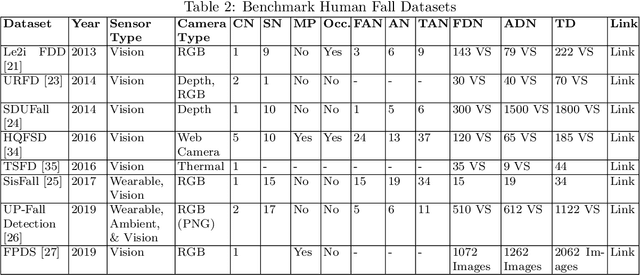Vision-based Human Fall Detection Systems using Deep Learning: A Review
Paper and Code
Jul 22, 2022



Human fall is one of the very critical health issues, especially for elders and disabled people living alone. The number of elder populations is increasing steadily worldwide. Therefore, human fall detection is becoming an effective technique for assistive living for those people. For assistive living, deep learning and computer vision have been used largely. In this review article, we discuss deep learning (DL)-based state-of-the-art non-intrusive (vision-based) fall detection techniques. We also present a survey on fall detection benchmark datasets. For a clear understanding, we briefly discuss different metrics which are used to evaluate the performance of the fall detection systems. This article also gives a future direction on vision-based human fall detection techniques.
 Add to Chrome
Add to Chrome Add to Firefox
Add to Firefox Add to Edge
Add to Edge